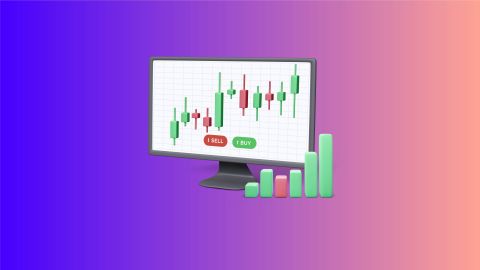Gross National Product (GNP) represents the total monetary value of all final goods and services produced by a nation’s economy within a specific period, typically a year. Unlike Net National Product (NNP), GNP does not account for depreciation or capital consumption. It serves as an important indicator of a country's overall economic performance.
What is gross national product (GNP)
Gross national product’s meaning refers to the total market value of all final goods and services produced by a country's residents regardless of the place where the production of goods or supply of services took place. GNP is an economic metric that measures the total value within a specific time frame, typically one year.
GNP also considers the investments made by the residents of the country and businesses within or outside the country. Furthermore, it also takes into account the total value of products produced by industries that have a domestic origin.
GNP excludes the income generated by foreign nationals in the country or the value of products manufactured by a foreign company using the country’s manufacturing units.
Importance of GNP
Gross national product is one of the most important economic indicators for grasping a country's overall economic condition. If a country's GNP is higher than last year, it indicates that the country is performing better economically.
GNP provides vital information about manufacturing, investments, production outputs, employment, etc., for a specific period, providing crucial data to a country’s government about the economy. The government and its policymakers can use this data to understand the current economic landscape and make policies and laws for further development.
Unlike GDP, gross national product calculates the earnings of a country’s residents irrespective of the location of production, which makes GNP a better economic indicator than GDP. This is because Indian citizens can have earnings from both domestic and international sources, and GNP considers both incomes. Hence, in most cases, GNP is higher than GDP and provides a broader view of India’s economic performance.
GNP is also important for analysing the balance of payments, which is the difference between India’s total exports and imports. A balance of surplus means that India’s exports were higher than its imports, while a deficit means that the imports were higher than the exports.
Check why Capital Adequacy Ratio matters in banking regulations
How is GNP calculated?
GNP can be calculated using various approaches, including the expenditure approach, income approach, and production approach. However, the most commonly used method is the expenditure approach, which sums up all expenditures on final goods and services within a specific time period.
In the Indian economy, GNP is calculated by adding the domestic production by Indian residents and the net factor income from abroad. Net factor income from abroad includes income earned by Indian residents from their investments and labour abroad, minus similar payments made to foreigners within the country's borders.
Mathematically, GNP can be expressed as follows:
GNP = GDP + Net factor income from abroad
Where: GDP = Gross domestic product
Net factor income from abroad = (Income earned by Indian residents from abroad) - (Income earned by foreigners in India)
Additional read: What is Forex Trading
What does gross national product measure?
GNP measures a country’s total economic output, including the value of goods and services produced by its citizens and businesses, whether within the country or abroad. It excludes income earned by foreign residents within the country’s borders. For example, if a country has production facilities abroad, their output is included in GNP, along with domestic production. This metric helps assess the overall economic strength of a nation beyond its geographical boundaries.
What is the difference between GDP and GNP?
While GNP and Gross domestic product (GDP) are both essential indicators of a nation's economic performance, they differ in their scope. Here is a comparison between Gross domestic product (GDP) and Gross national product (GNP):
Aspect |
GDP |
GNP |
Definition |
Measures the total value of all goods and services produced within a country's borders during a specific time period. |
Measures the total value of all goods and services produced by a country's residents, regardless of where they are located, during a specific time period. |
Scope |
Focuses solely on domestic production, regardless of the nationality of the producers. |
Includes the income earned by a country's residents domestically and abroad, irrespective of where the production occurs. |
Calculation |
Calculated by summing up all expenditures on final goods and services within a country's borders. |
Calculated by adding domestic production by residents and net factor income from abroad. |
Components |
Consumption, investment, government spending, and net exports. |
Domestic production and net factor income from abroad. |
Foreign income |
Does not account for income earned by the country's residents from abroad. |
Includes income earned by the country's residents from investments and labour abroad. |
Nationality of producers |
Considers the location of production within the country's borders. |
Considers the nationality of the producers, regardless of where the production occurs. |
What is an example of gross national product
For a better understanding of what is GNP, consider the following example:
A country's gross national product is higher than its gross domestic product. Since gross national product also includes earnings from foreign sources, it means that the country’s residents, corporations, and businesses have earned more overall.
This also means that these entities have contributed to net positive inflows to the country through their overseas operations. A higher gross national product signals that the country is developing and increasing its international trade operations, business earnings, or production.
Conclusion
In conclusion, Gross national product (GNP) serves as a vital indicator of a nation's economic performance, encompassing both domestic production and income earned by residents from abroad. Understanding GNP provides valuable insights into the country's economic contributions globally. By comprehending the nuances of GNP calculation and its implications, policymakers and economists can make informed decisions to foster sustainable economic growth and development.




